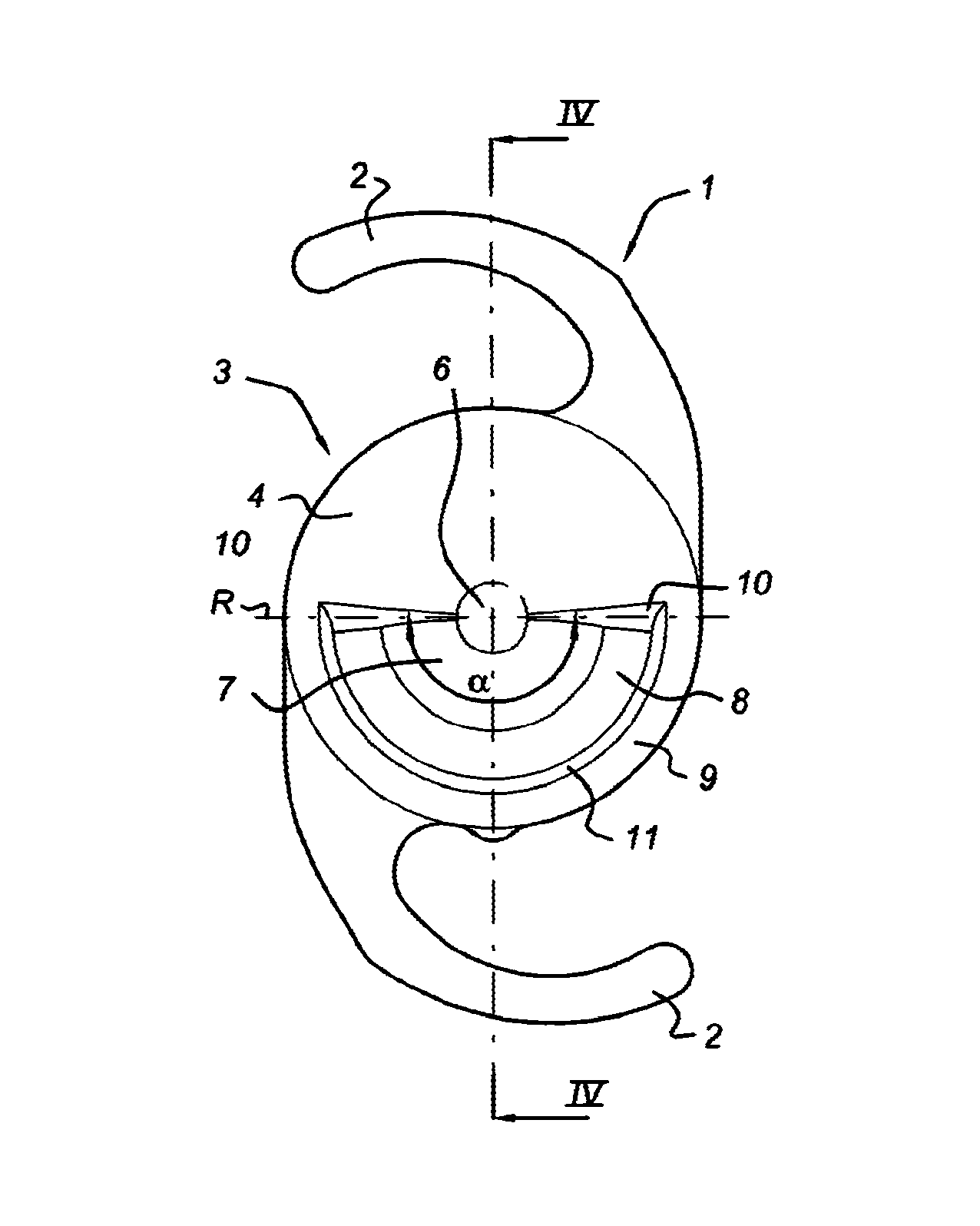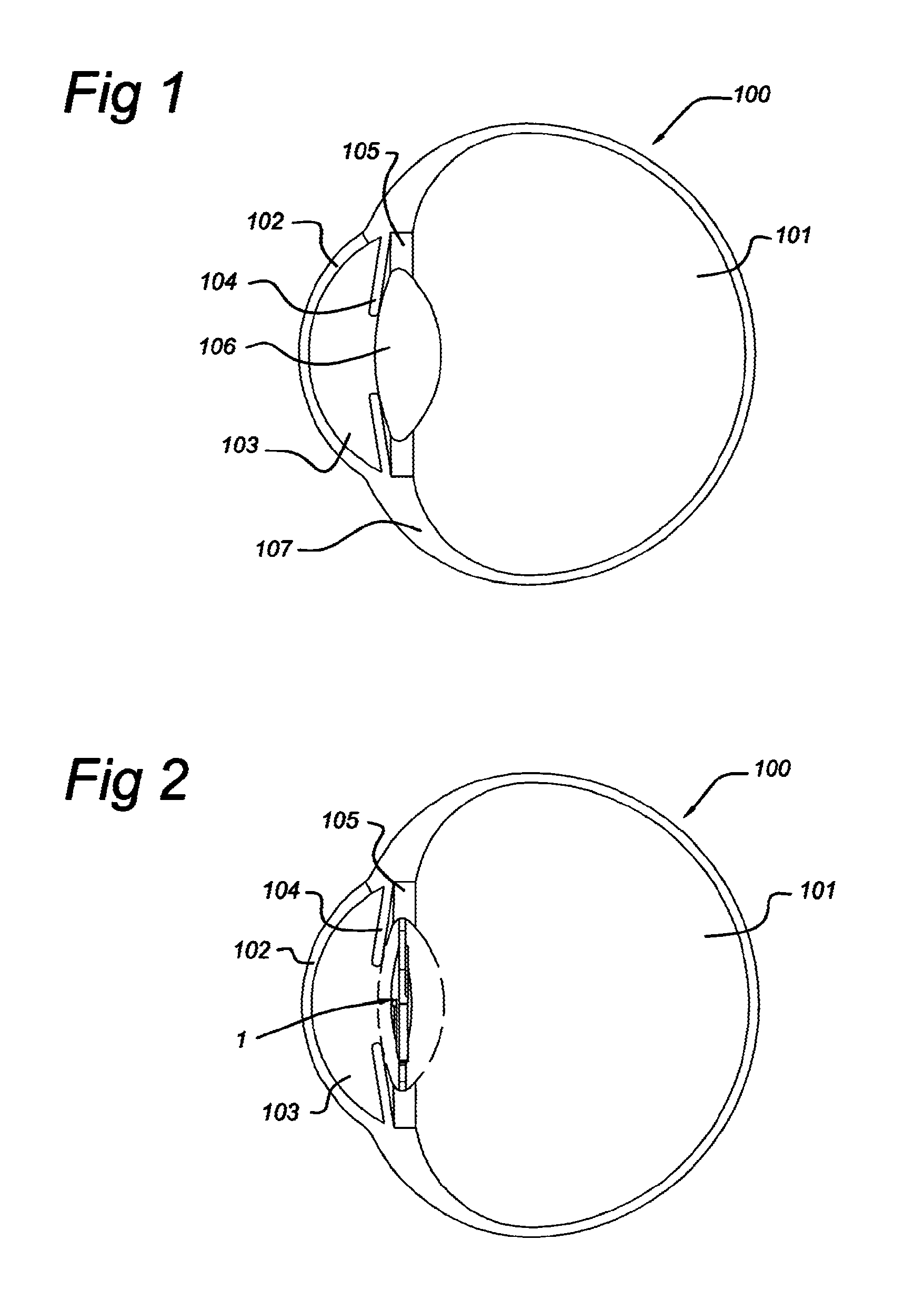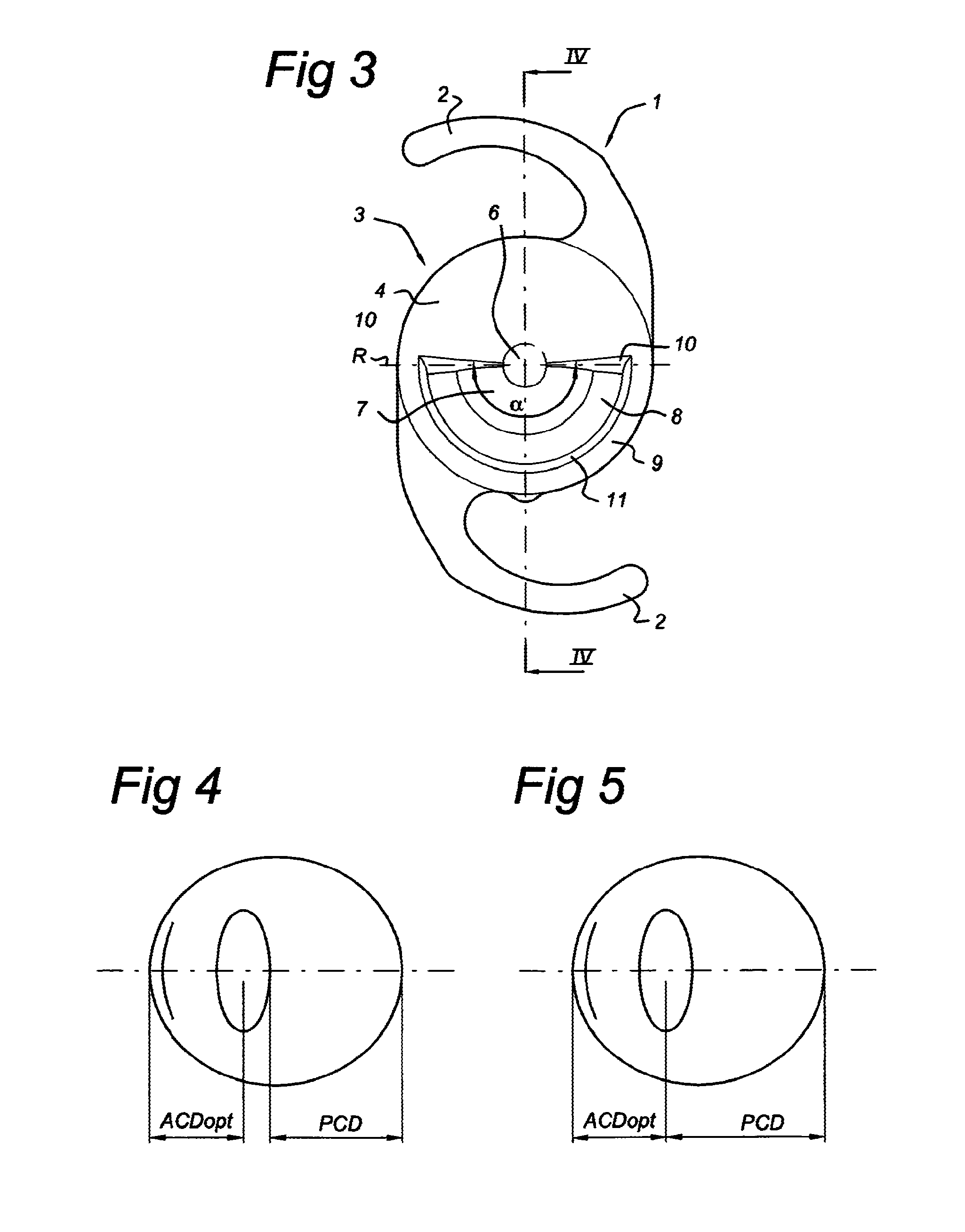Intra ocular lens
a technology of ocular lens and ocular lens, applied in the field of intraocular lens, can solve the problems of inability to accurately simulate visual performance, inability to accurately predict the exact purpose and function of crystalline lens, and more or less complete loss of vision, so as to achieve significant improvement in optical quality
- Summary
- Abstract
- Description
- Claims
- Application Information
AI Technical Summary
Benefits of technology
Problems solved by technology
Method used
Image
Examples
examples
Equiconvex IOL
[0109]In this example the conic constant for the posterior surface of an equiconvex IOL is calculated. The optical power calculated according to Haigis is 22 Dioptre with zero spherical aberration.
[0110]For the calculation of the correcting conic factor we need the posterior radius of the IOL. The radius of the posterior lens surface can be easily calculated from the IOL power and shape factor and refractive indexes. For a equiconvex IOL, the optical power is equally distributed between the posterior and anterior surface. The optical power of the posterior surface is therefore 11 dioptre. From the paraxial power we calculate the posterior radius rb:
[0111]rb=n2-n1Φposterior
with n1 the refractive index of IOL and n2 the refractive index of vitreous body of the eye. Selecting
Φposterior=22 / 2 Dioptre
n1=1.46
n2=1.336
rb=−11.3 mm (Negative sign)
[0112]The PCD calculated from eq. 17:
PCD=23.868−0.262.22=18.1 mm.
[0113]k=-n2rb3n12(1R-1PCD)2·(n2rb-n1+n2PCD)
[0114]When inserting the ...
PUM
 Login to View More
Login to View More Abstract
Description
Claims
Application Information
 Login to View More
Login to View More - R&D
- Intellectual Property
- Life Sciences
- Materials
- Tech Scout
- Unparalleled Data Quality
- Higher Quality Content
- 60% Fewer Hallucinations
Browse by: Latest US Patents, China's latest patents, Technical Efficacy Thesaurus, Application Domain, Technology Topic, Popular Technical Reports.
© 2025 PatSnap. All rights reserved.Legal|Privacy policy|Modern Slavery Act Transparency Statement|Sitemap|About US| Contact US: help@patsnap.com



